Dear Health Commissioner and Board of Health Commission,
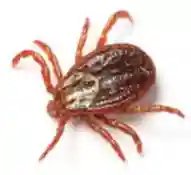 Last summer, my 11 year old cousin was diagnosed with Lyme Disease. With an enlarged knee, he could not walk, was feverish, and we took turns pushing him in a wheelchair. Luckily, he confirmed he had the disease in time for an effective treatment. Then, we found a tick on our kitchen floor. We were advised to preserve it and just wait for symptoms before testing. Where we live in Massachusetts, Lyme Disease and a more dangerous type of Lyme, called Powassan, are growing. Ticks are no longer confined to wooded areas. They are in our playgrounds, backyards and now, even in our homes. In 2016, Massachusetts had the 2nd highest number of confirmed cases of Lyme (3,646) and the 4th highest for Powassan.
Last summer, my 11 year old cousin was diagnosed with Lyme Disease. With an enlarged knee, he could not walk, was feverish, and we took turns pushing him in a wheelchair. Luckily, he confirmed he had the disease in time for an effective treatment. Then, we found a tick on our kitchen floor. We were advised to preserve it and just wait for symptoms before testing. Where we live in Massachusetts, Lyme Disease and a more dangerous type of Lyme, called Powassan, are growing. Ticks are no longer confined to wooded areas. They are in our playgrounds, backyards and now, even in our homes. In 2016, Massachusetts had the 2nd highest number of confirmed cases of Lyme (3,646) and the 4th highest for Powassan.
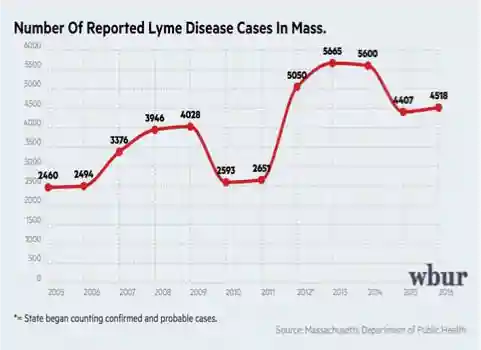 |
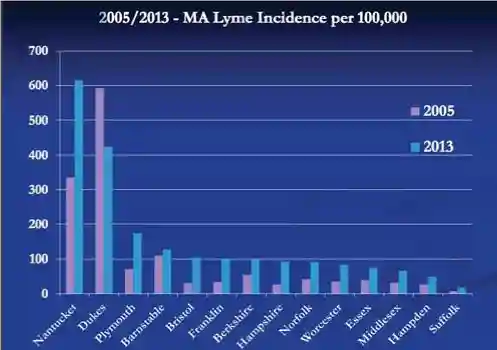 |
| 2005-16 Reported Lyme Disease Cases in MA |
2005-13 Lyme Disease Increase by MA County |
Lyme Disease causes muscle pain, fevers, and rashes, affecting 300,000 people in our country yearly and can be hard to detect. Powassan is a strand of Lyme that causes fevers, seizures, memory loss and even death. Lyme is curable with antibiotics if you catch it quickly. However, no medication exists for Powassan. With our current infrastructure for public safety, all the Center for Disease Control can do is warn us to avoid ticks and wear covered clothing or DEET. Yard sprays are an option but not always effective or environmentally friendly. Some scientists are exploring giving the entire mice species an anti-lyme vaccine since they are the main hosts for ticks, but this may take 50 years. While scientists are researching medication and vaccines for humans, I believe we can create quicker engineering solutions for this serious problem.
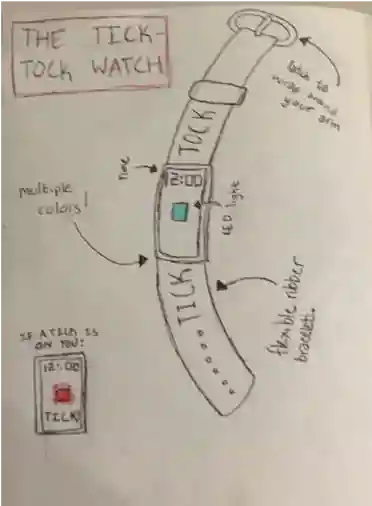 Electrical and chemical engineers can work to invent a technology for watches which I would call the Tick Tock. This watch would not only emit an environmentally friendly tick repellent, but alerts you if a tick is present through LED lights. The watch attracts and traps ticks to itself by emulating warm, moist, thin skin with blood properties, which is ideal for ticks to feed on. Instead of climbing to your head, ticks will gravitate to the watch. Tick Tock technology can also detect Kininases, the painkiller ticks release into humans, which numbs the feeling of tick bites. This device would function like a real watch, have a GPS, come in various colors, and instantly record the time and location the tick was discovered. All data would be sent to the CDC. However, this will take time to prototype and check for effectiveness. (Image: Original Blueprint for the TIck Tock Watch)
Electrical and chemical engineers can work to invent a technology for watches which I would call the Tick Tock. This watch would not only emit an environmentally friendly tick repellent, but alerts you if a tick is present through LED lights. The watch attracts and traps ticks to itself by emulating warm, moist, thin skin with blood properties, which is ideal for ticks to feed on. Instead of climbing to your head, ticks will gravitate to the watch. Tick Tock technology can also detect Kininases, the painkiller ticks release into humans, which numbs the feeling of tick bites. This device would function like a real watch, have a GPS, come in various colors, and instantly record the time and location the tick was discovered. All data would be sent to the CDC. However, this will take time to prototype and check for effectiveness. (Image: Original Blueprint for the TIck Tock Watch)
Another solution that computer engineers can create in the meantime is a mobile phone app that I would call Tickled, which notifies the public where a tick was identified. Members would contribute to this by uploading locations where they have spotted a tick so we can be prepared. This is similar to traffic/navigation apps that engineers can design immediately at no cost. The issue with this though is that we have to depend on people to accurately report ticks which is not always reliable.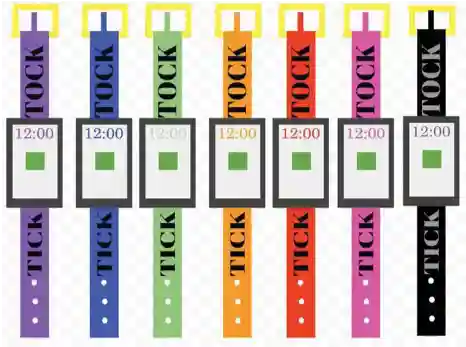
When researching current engineering solutions, I discovered the Tickbot. It is a robot that moves across lawns with an attached piece of cloth that attracts ticks, thinking it is a human's pant leg or sock. The cloth has carbon dioxide on it, adding to the illusion of a warm blooded creature. Another engineer thought to place dry ice into a cup with holes to fake mammal breath, and it worked. Duke University's Global Health Institute scientists are taking Tickbot ticks back to their laboratory to research these pests for better solutions. One challenge though is that Tickbots are expensive. We also cannot be constantly exterminating ticks, costing even more time and effort. (Image: Final Design for the Tick Tock Watch)
Even though the Tick Tock watch may be the most convenient to use, the Tickbot and Tickled app, are the best ideas we can simultaneously use now until we prototype the Tick Tock. Alongside our health professionals, we need engineers to invent solutions that we can build into our community's infrastructure for public safety. For now, we can at least start implementing the Tickbot in the most infested towns and create an app since we know that time is ticking!
Thank you.
WORK CITED
“Ticks are here to stay. But scientists are finding ways to outsmart them.” Susan Milius. (August 19, 2017.) https://www.sciencenews.org/article/ticks-here-stay-scientists-finding-ways-outsmart-blo odsuckers
“TickBot: A novel robotic device for controlling tick populations in the natural environment.” Holly D.Gaff, Alexis White, Kyle Leas, Pamela Kelman, James C.Squire, David L. Livingston, Gerald A.Sullivan, Elizabeth W. Baker, Daniel E.Sonenshine. (March, 2015.) https://www.sciencedirect.com/science/article/pii/S1877959X14002118#!.
“Lyme disease cases reach 300,000 per year in U.S., are underreported: CDC.” Author unknown. (Augest 20, 2015.) http://www.nydailynews.com/life-style/health/lyme-disease-cases-reach-300-000-year-c dc-article-1.1431675.
“What is powassan virus.” KidsHealth. Date unknown. http://kidshealth.org/en/parents/powassan-virus.html
“12 Worst States For Lyme Disease” Samuel Stebbins. (July 17, 2016.) http://247wallst.com/special-report/2016/07/02/the-states-with-the-most-lyme-disease/2/
“Top Ten Things Everyone Should Know About Ticks These Days” Thomas Mather. Date unknown. http://www.tickencounter.org/prevention/top_ten_things_list
“Map: Where Lyme Disease Is Worsening In Mass.” Dr. David Scales, Daigo Fujiwara. (July 18,2017.) http://www.wbur.org/commonhealth/2017/07/18/massachusetts-map-lyme-disease
“Should I Worry About a Tick Bite?” MaryAnn De Pietro. (October 2016.) https://www.medicalnewstoday.com/articles/313733.php
“Deer and Ticks…. One Bite Can Change Your Life” Massachusetts Association of Public Health Nurses. (April 14, 2016.) https://www.maphn.org/resources/Documents/Tick%20Update%202016.pdf